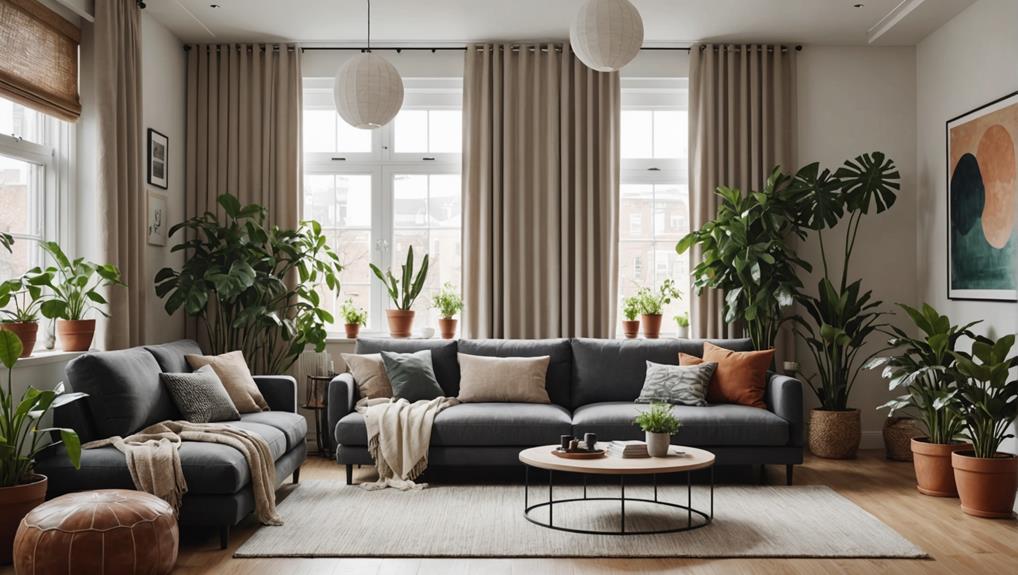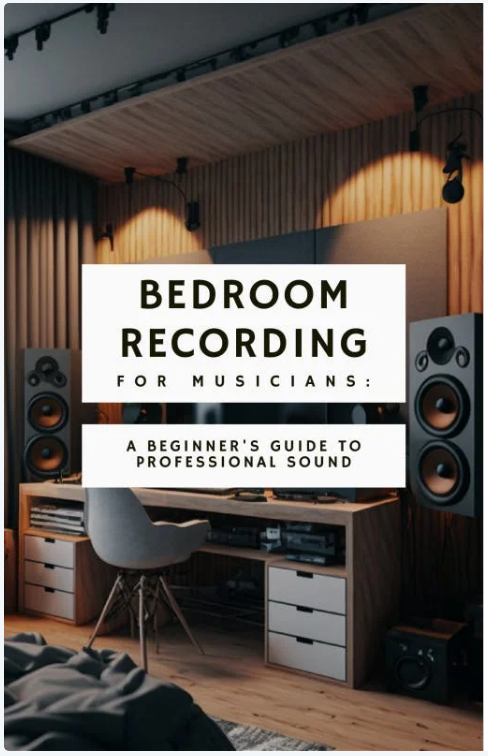To reduce echo in small rooms, start by adding soft furnishings like rugs, curtains, and upholstered furniture. These absorb sound and minimize reflections. Consider using acoustic panels and foam, which effectively reduce noise when placed strategically. Bass traps can help with low frequencies, especially when positioned in corners. Additionally, rearranging furniture disrupts sound paths, further dampening echoes. Layering rugs can enhance absorption, too. Assess your room’s layout to pinpoint reflective surfaces, and make targeted improvements. You’ll find there are plenty of creative solutions that can transform your space into a quieter environment.
Key Takeaways
- Incorporate soft furnishings like rugs, curtains, and upholstered furniture to absorb sound and minimize echo.
- Use acoustic panels strategically placed at first reflection points to enhance sound absorption effectively.
- Add bass traps in corners to capture low-frequency sound waves and improve overall clarity.
- Rearrange furniture to disrupt straight lines and parallel surfaces, reducing sound reflection paths.
Understanding Echo in Small Spaces
Understanding the causes of echo in small spaces is essential for creating a more pleasant acoustic environment in your home. In small rooms, echo often arises from hard surfaces like walls, floors, and ceilings that reflect sound rather than absorb it. This reflection leads to increased reverberation, where sound waves bounce back quickly, creating a continuous noise effect that can be distracting.
To tackle this issue, consider incorporating soft furnishings. Items like rugs, curtains, and upholstered furniture can greatly absorb sound, reducing the echo you experience. By choosing furnishings that have textured surfaces, you can further diminish the sound waves that would otherwise amplify across hard surfaces.
Rearranging your furniture can also help reduce noise. Positioning items in a way that maximizes sound-absorbing surfaces will disrupt the path of reflecting sound. Although acoustic panels are a more targeted solution, simply minimizing hard surfaces and integrating more soft elements into your space can make a noticeable difference in echo levels.
Acoustic Panels for Sound Absorption
Acoustic panels effectively absorb sound waves, making them a smart solution for reducing echo in small rooms. These panels come in various shapes, sizes, and colors, allowing for customization that matches your room’s decor while enhancing sound absorption.
Here are three key benefits of using acoustic panels:
- Efficient Sound Absorption: With a noise reduction coefficient (NRC) ranging from 0.5 to 1.0, acoustic panels can absorb between 50% to 100% of sound energy, drastically cutting down on echo.
- Optimal Placement: To maximize their effectiveness, place the panels at first reflection points. This strategic positioning helps capture sound waves before they bounce around the room.
- Eco-Friendly Options: Many acoustic panels are made from environmentally friendly materials, such as recycled PET, making them a sustainable choice for improving your space’s acoustics.
Utilizing Acoustic Foam Solutions
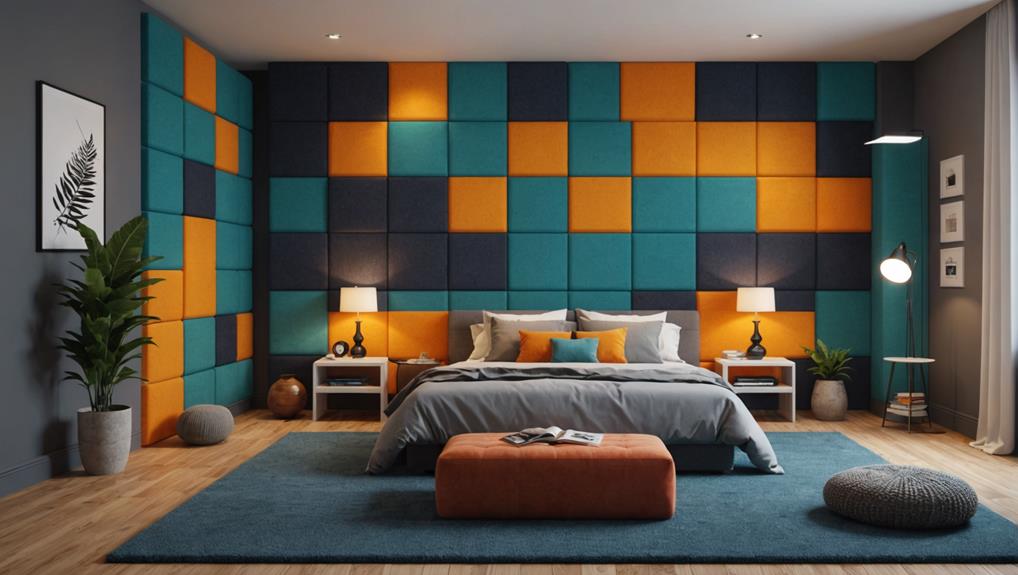
To effectively reduce echo and enhance sound quality in small rooms, consider using acoustic foam solutions tailored to your specific needs. Acoustic foam is specifically designed to absorb noise and minimize sound reflections off hard surfaces. By strategically placing foam panels, you can greatly improve the acoustics in your space.
Here’s a quick overview of acoustic foam options:
| Feature | Details |
|---|---|
| NRC Range | 0.20 – 0.50 |
| Installation | Easy to install, DIY-friendly |
| Ideal Use | Home studios, offices, etc. |
When you install acoustic foam, you can expect to reduce echo effectively, as it absorbs 20-50% of sound energy. This enhancement leads to clearer speech and music, making it an excellent choice for any area where sound quality is essential. With many products available for around $100 or less, you don’t have to break the bank to achieve better acoustics. So, start exploring acoustic foam solutions today and transform your small room into a sound-friendly environment!
Incorporating Textiles and Soft Furnishings
Adding textiles and soft furnishings can further enhance your room’s acoustics by absorbing sound waves and minimizing echo. To effectively reduce echo, consider the following:
- Heavy Curtains: Opt for thick, heavy curtains that can absorb sound and cover windows. They prevent sound from bouncing off reflective surfaces, making a noticeable difference in your room’s acoustics.
- Area Rugs: Lay down plush area rugs, especially those with deep pile. These rugs soften hard flooring surfaces and help absorb sound, preventing echo from bouncing around the room.
- Upholstered Furniture: Incorporate upholstered furniture like sofas and chairs. Their soft fabrics act as sound-absorbing textiles, reducing echo while adding comfort and style.
Additionally, wall-mounted acoustic panels or tapestries can enhance aesthetics while disrupting sound reflections.
Layering different textiles, such as combining curtains with cushions and throws, creates a richer sound-absorbing environment, further decreasing echo levels.
Adding Bass Traps for Low Frequencies
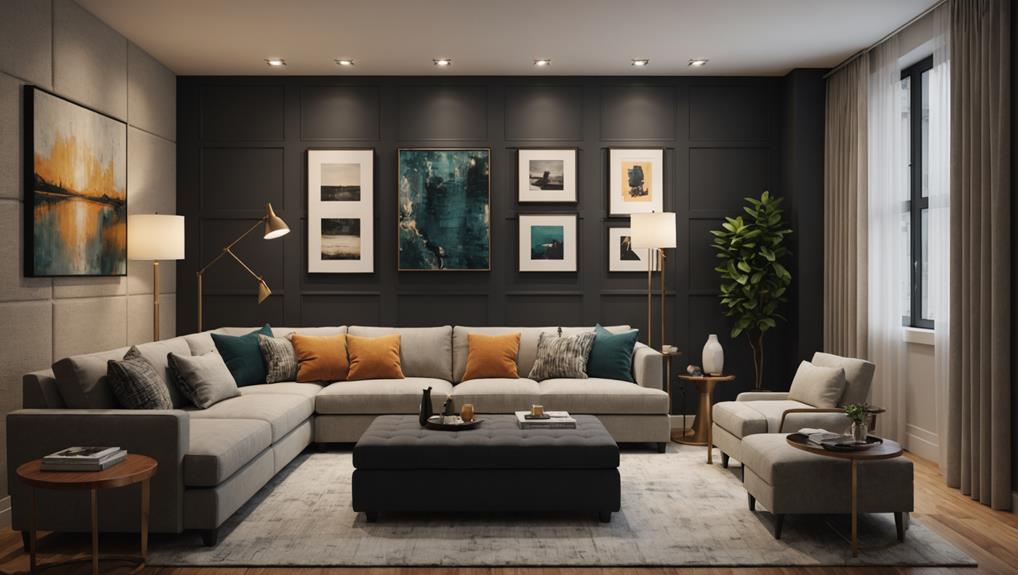
Bass traps play an essential role in absorbing low-frequency sound waves, helping you achieve clearer acoustics in your small room. By placing these traps in the corners, where sound energy accumulates, you can greatly enhance sound clarity and reduce echo. They work best when combined with mid and high-frequency absorbing panels, creating a balanced sound environment.
Here’s a quick overview of bass traps and their benefits:
| Type of Treatment | Purpose | Ideal Placement |
|---|---|---|
| Bass Traps | Low-frequency absorption | Corners of the room |
| Absorbing Panels | Mid/high-frequency absorption | Walls and ceilings |
| Thick Bass Traps | Enhanced low-frequency absorption | Corners, stacked if needed |
| Lightweight Traps | Portable and flexible | Anywhere needed |
| Combination Treatments | Overall echo reduction | Throughout the room |
Incorporating bass traps not only improves sound quality but also contributes to a more enjoyable listening environment, which is vital for music production and home theater setups. Prioritizing these acoustic treatments can transform your small room into a sound haven.
Furniture Arrangement for Sound Management
Positioning furniture thoughtfully can greatly enhance sound management in your small room, further complementing the effects of bass traps.
The right furniture arrangement can significantly reduce echo in small rooms. Here are three effective strategies to ponder:
- Use Soft Fabric Furniture: Incorporate upholstered chairs and couches to increase sound absorption. These materials help soften sound waves, effectively reducing overall echo.
- Create Cozy Corners: Strategically placed furniture can trap sound and minimize the distance sound waves travel. Grouping furniture into cozy corners not only enhances comfort but also aids in sound dampening.
- Avoid Straight Lines: Arrange large furniture pieces away from walls and disrupt straight lines and parallel surfaces. This approach breaks up sound reflections, which are common causes of echo, allowing for better sound diffusion.
Implementing Temporary Sound Solutions
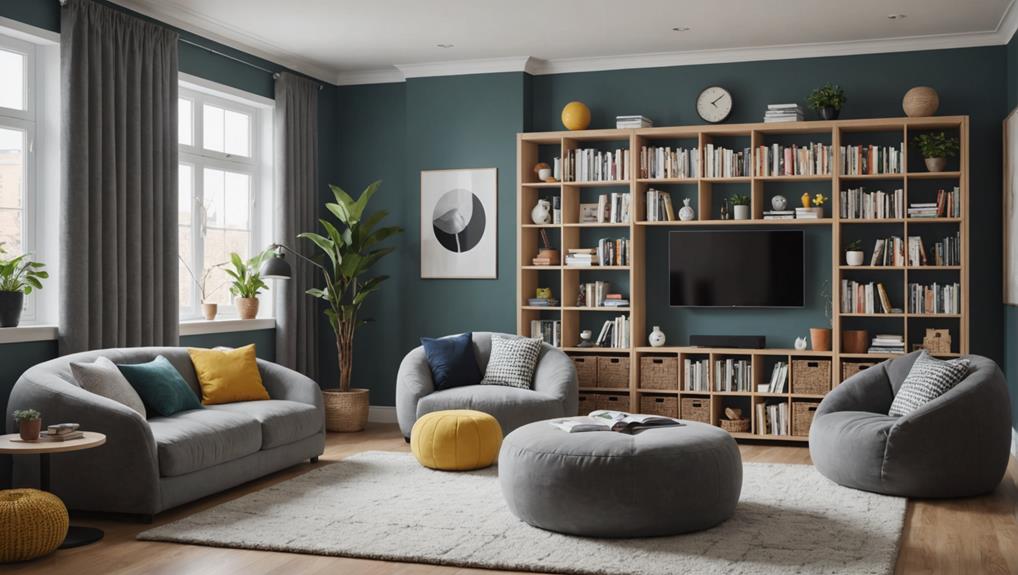
To quickly tackle echo in small rooms, consider using a mix of portable sound solutions that you can easily set up and adjust as needed.
Sound blankets are a great choice; you can hang or drape them to provide temporary sound absorption and effectively reduce echo. Foam mats also work well—lay down foam squares on the floor and layer area rugs on top for enhanced echo reduction.
Temporary acoustic panels are another option. These removable panels offer easy installation and effective sound absorption without any permanent changes to your space.
You might also want to incorporate decorative elements like tapestries or large canvas textiles on parallel walls, which can disrupt sound reflection and add visual interest.
Additionally, think about your furniture arrangement. Strategically positioning tall bookshelves and soft furnishings can act as sound diffusers, temporarily minimizing echo.
If your room has large windows, consider using soft furnishings like curtains to help absorb sound.
Effective Use of Rugs and Carpets
Rugs and carpets play an essential role in reducing echo in small rooms by absorbing sound waves that would otherwise reflect off hard surfaces. When you choose the right flooring options, you can create a more pleasant acoustic environment.
Here are three effective strategies to contemplate:
- Opt for Thicker Rugs: Using thicker area rugs can greatly enhance sound absorption. The denser the fibers, the better they trap sound waves, preventing echoes in a room.
- Carpet the Entire Floor: If possible, carpeting your entire floor is an excellent way to minimize echoes. The continuous surface of carpeting works effectively to absorb sound and create a quieter space.
- Layer Foam Mats: Placing foam mats under your area rugs can improve sound-absorbing qualities. This combination creates a soft surface that helps sound waves to bend, reducing reflections and enhancing comfort.
Assessing Installation and Effectiveness
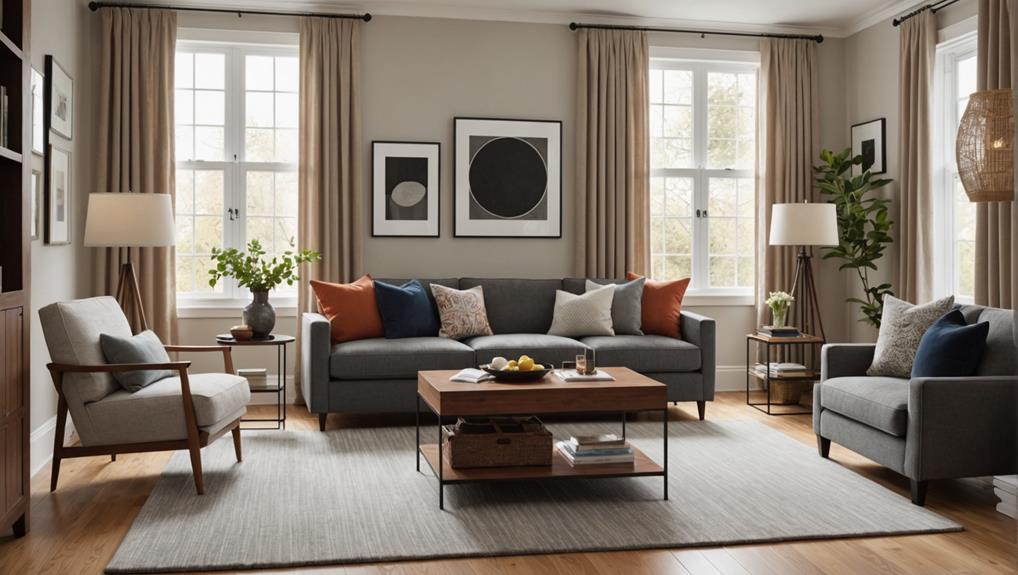
Evaluating your room’s layout is essential for identifying reflective surfaces that contribute to echo, so you can effectively plan for necessary acoustic treatments.
Start by examining your walls, floors, and ceilings to pinpoint areas that amplify sound. Once you’ve identified these surfaces, consider incorporating sound-absorbing materials like acoustic panels, rugs, and heavy curtains.
To maximize their effectiveness in reducing echo, position acoustic panels at the first reflection points—these are spots where sound bounces off surfaces before reaching your ears. This strategic installation can greatly enhance your room’s acoustics.
Additionally, pay attention to the Noise Reduction Coefficient (NRC) of the materials you choose. Aim for products with an NRC of 0.5 or higher, as they’ll provide better sound absorption in small spaces.

